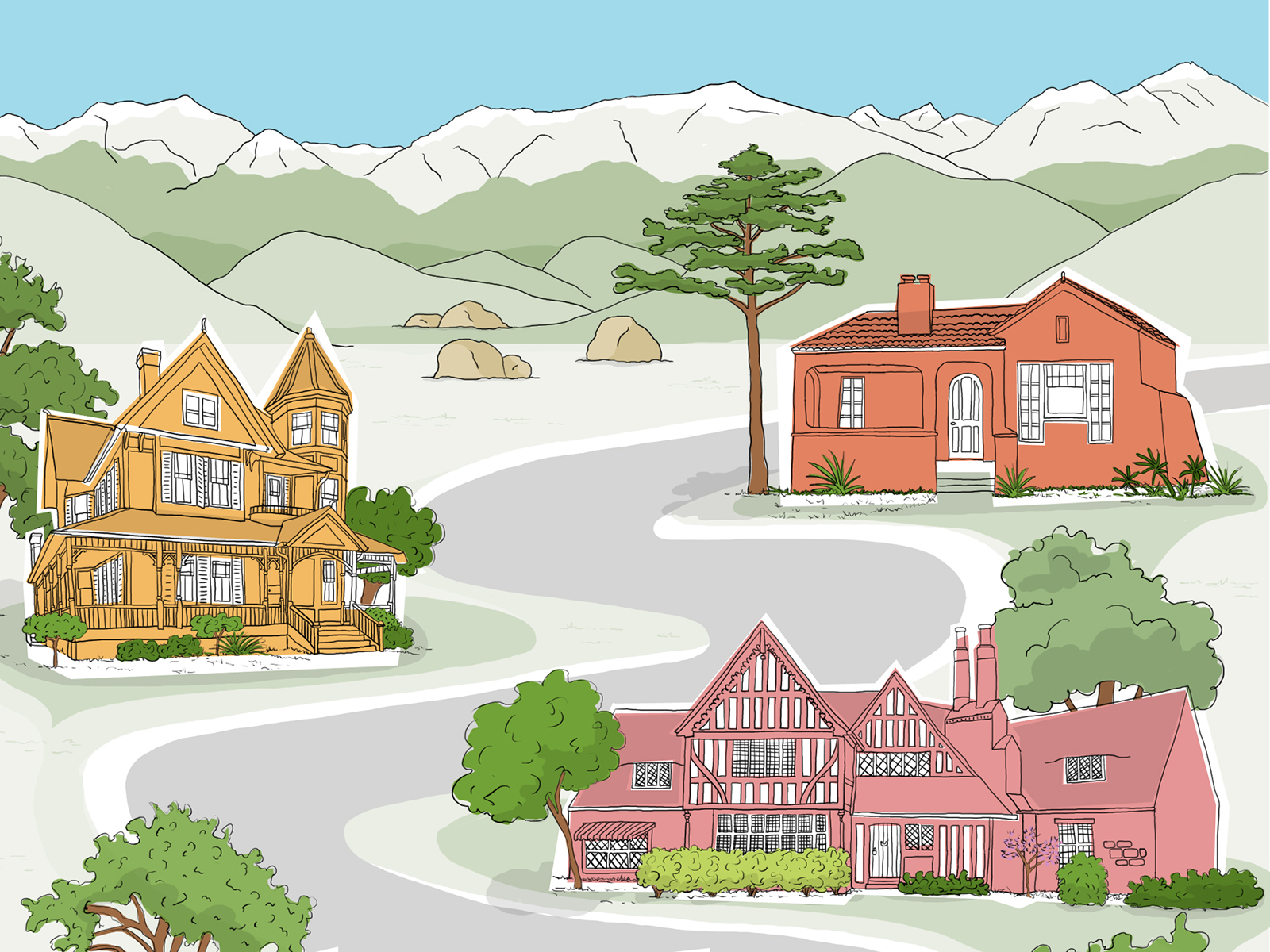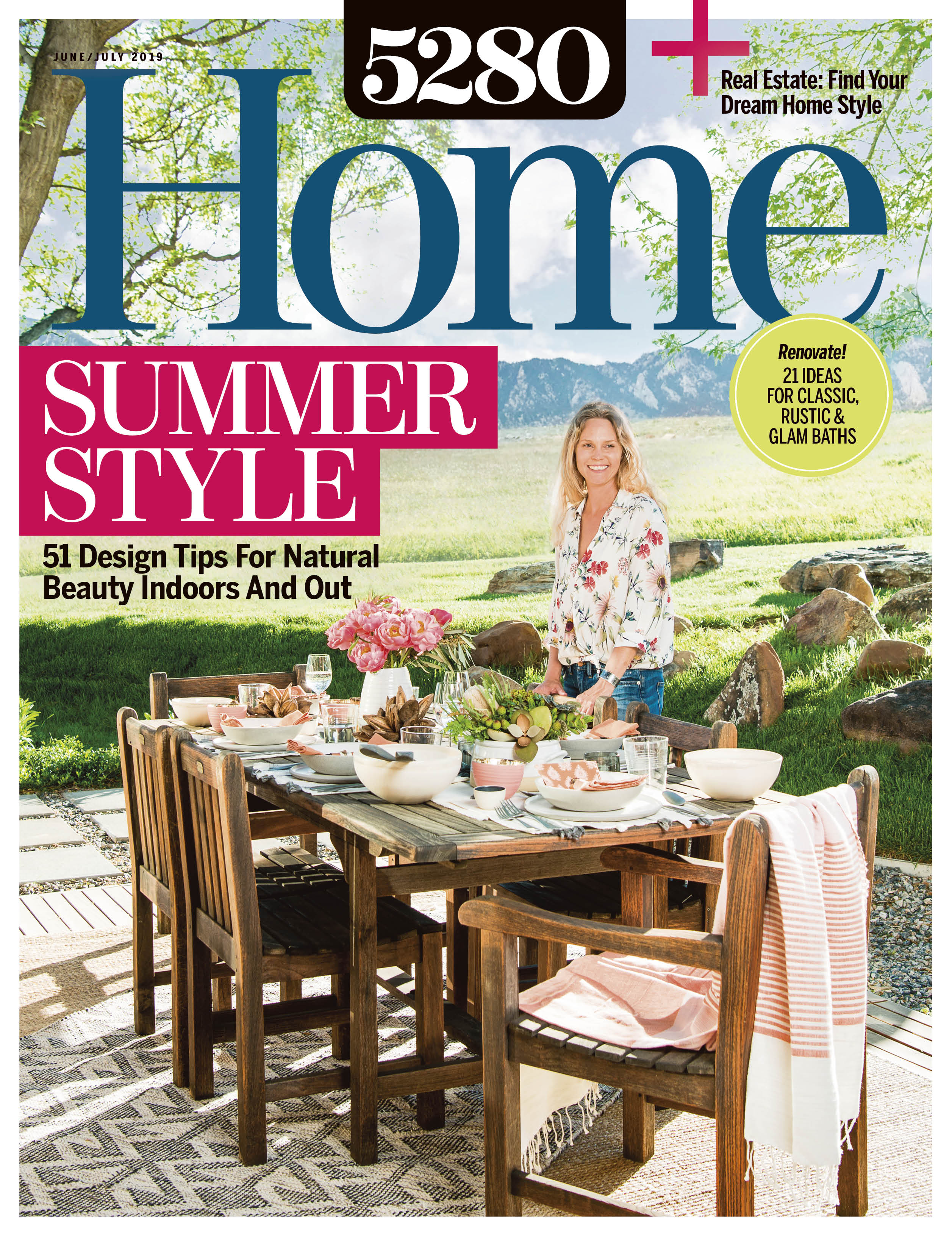The Local newsletter is your free, daily guide to life in Colorado. For locals, by locals.
Most home-buyers call their real estate agent with a “must” list at the ready—a catalog of wants and whims ranging from the number of bathrooms needed to retain familial sanity to walkability to the newest hipster bar. But the aesthetes among us are on the hunt for even more: a bona fide architectural gem—an antidote to the soulless new builds popping up around town. “There’s this shift happening in that people are wanting homes with more detail and charm, and not just a blank slate,” says real estate agent Heidi Cox of Distinct Real Estate.
To help you find those homes, we’ve created the following rundown of where to look for architectural beauties in and around Denver, the drawbacks and benefits of six common styles, how to maximize your MLS search, what to know about historic designations, and much more. Whether you’re dreaming of waking up each morning in a classic Denver Square, or you’ve already furnished a mid-mod ranch in your mind (Eames forever!), there’s help for you here.
Our panel of real estate experts:
Ron Buss, Realtor at Coldwell Banker
Dee Chirafisi, broker and founder of Kentwood City Properties
Heidi Cox, Realtor at Distinct Real Estate
Lane Walsh, broker and owner of Dwell Denver Real Estate
By the Numbers: So, What’s It Going to Cost You?

Short answer: It varies, but be prepared to pay more for less. For example, “midcentury moderns usually don’t have basements, which means they’re typically lower square footage,” says Realtor Lane Walsh of Dwell Denver Real Estate. “And architectural styles with smaller floor plans sell for a higher price per square foot simply because of the math. If a 900-square-foot bungalow in West Highland sells for $530,000, the price per square foot is about $588. If a 2,000-square-foot Denver Square in Park Hill sells for $900,000, the price per square foot is $450. So even though the Denver Square is more expensive, the bungalow has a higher price per square foot.” Ultimately, says Realtor Dee Chirafisi of Kentwood City Properties, the cost of a historical property is often determined by how much it has been renovated: “A Victorian with original electrical, plumbing, and kitchen is likely going to be much less expensive than an [updated] midcentury modern.”
Know the Lingo: Denver Architecture 101
Presenting six historical home styles that are iconic to Denver—plus where to find them and what pitfalls to expect.
Queen Anne Victorian

Leave it to an architectural style named for a royal to be ornate. From 1880 to 1910, these amped-up Victorians were the ne plus ultra in modern living, with scalloped shingles to draw eyes up to gables, turned spindles zhushing up porches, and interiors so cinematic you’d think you were on a movie set.
Expert Intel: “Victorians can have very challenging floor plans,” Realtor Lane Walsh says. Kentwood City Properties’ Dee Chirafisi agrees: “It’s difficult to do any kind of main-floor master suite because they just weren’t laid out that way—although a lot of people do really lovely additions on the back.”
Where to Look: Baker, City Park West, City Park South, Curtis Park, Sloan’s Lake, Washington Park West
Denver Square

As the 20th century got rolling, Foursquares (known locally as Denver Squares) were the hot home type: two stories and generous porches all contained in the form of a—you guessed it—square. This grand home style’s distinct rooms are the opposite of open-plan living, and that’s just how homeowners liked it.
Expert Intel: “One drawback of these homes is that they have a central staircase that tends to break up the floor plan,” Chirafisi says.
Where to Look: Baker, Capitol Hill, Cheesman Park, City Park West, City Park South, Five Points, Highland, Washington Park
Craftsman Bungalow

These charming odes to the Arts and Crafts movement flourished in Denver between 1900 and 1930 and are best known for their clapboard or brick exteriors, gable rooflines with exposed rafter tails, and wide porches perfect for whiling away an afternoon. Interior layouts are cozy as can be (read: often cramped).
Expert Intel: “Since they’re typically one-level [floor plans], there’s a bed and bath on the main floor, which can be a plus,” Chirafisi says. “The drawback is that some people think they’re dark because they have large overhanging roofs, which were done intentionally to create shade and keep living spaces cooler.”
Where to Look: City Park, Congress Park, Platt Park, West Highland, Washington Park
Tudor Revival

Hansel and Gretel would feel at home in a Tudor, thanks to the straight-out-of-a-fairytale decorative wood—called half-timbering—that adds interest to the brick, stucco, or stone facades. A coveted style in the 1920s, Tudors are also known for their hipped and gable roofs and decorated chimneys. Inside? Details galore, including arched doorways.
Expert Intel: “The upstairs is often not a true second floor, because the roofline is not dormered—so a tall person can stand in the middle of a room, but might hit his head on the ceiling if he moves four feet in either direction,” Walsh says. “Also, [Tudors] don’t have the open floor plan that many buyers these days are looking for.”
Where to Look: Belcaro, Bonnie Brae, Mayfair, Montclair, Park Hill, Washington Park
Mediterranean Revival

Silver Screen aficionados obsess over these tile-roofed gems, which call to mind the artful architectural wonders of Old Hollywood. Trendy in Colorado in the 1920s, the beauties are known to feature white stucco facades, low pitched gable roofs, and arcaded entry porches.
Expert Intel: “Mediterranean Revivals tend to be modest in size, around 1,200 square feet,” Walsh says. “Those tile roofs can be a pain to replace—the average replacement cost of a regular asphalt shingle roof is about $10,000-$20,000, and a tile roof is $35,000-$40,000, depending on whether you choose clay or concrete. However, tile roofs can last up to 100 years! So I guess, in the long run, the price evens out.”
Where to Look: South Park Hill and Sloan’s Lake
Midcentury Ranch

You can thank California for this oh-so-popular style. Single-story midcentury ranches have been beloved since the postwar boom for good reasons: stair-free ease of living, open floor plans, and—key for Denver—attached garages.
Expert Intel: “Midcentury-modern homes have flat or slightly slanted roofs, and as such have very little insulation between the ceiling and roof,” says Ron Buss, Realtor for Coldwell Banker. “They also tend to have larger, single-pane windows; unless they’ve been replaced, they can lose heat in the winter.”
Where to Look: Arapahoe Acres (Englewood), Arapaho Hills (Littleton), Bel Aire (Wheat Ridge), Bonnie Brae, Harvey Park, Hilltop, Krisana Park, Lynwood, Montclair, and South Dahlia Lane
Find Your Dream Home Style
Not quite sure which architectural style is for you? Check out our fun key to find your home-design soul mate.
You might like a Queen Anne Victorian if … Queen Elizabeth II is your favorite royal and your idea of bling is an Art Deco emerald-cut diamond ring.
You might like a Denver Square if … you imagine making conversation with Prince William while trimming your rose bushes (and picking a few to put inside).
You might like a Craftsman Bungalow if … your jaw drops at the sight of a Patek Philippe pocket watch on Antiques Roadshow and Seattle is your dream vacation destination.
You might like a Tudor Revival if … Kate Middleton is your favorite royal, you dream of a long trip to Cheshire, England, and your idea of comfortable seating is a tufted chaise.
You might like a Mediterranean Revival if … you prefer succulents over roses, recently booked a trip to Seville, Spain, and want an Alexander Calder mobile in your home.
You might like a Midcentury Modern if … you want to kick back in a Scandi recliner next to a shelf of succulents with Prince Harry and Megan for company.
Q&A: What’s the Deal with Historic Designations?
To suss out whether historic designations might be worth the work to a homeowner, we asked Tom Hart. The architect behind Hart Studio is also on the board of trustees at Historic Denver, a nonprofit, urban historic preservation organization whose first major win was saving the Molly Brown House from the wrecking ball in the 1970s.

5280 Home: OK, tell us the truth. Is a historic designation a smart thing for a homeowner to apply for?
Tom Hart: It’s certainly worth doing. Part of it is intangible: These old buildings are what make Denver Denver. Our neighborhoods each have a different character, and that’s why people like them. I don’t want to slam suburbs, but they all just look the same.
How old does a house have to be to qualify?
The general rule of thumb in the historic-preservation community is 50 years, but some homes are younger.
Is there a financial upside?
There are Colorado preservation tax credits you can get if a building is individually landmarked or part of a neighborhood that’s landmarked. You’ll be able to recoup 20 percent of any qualified renovation costs up to $50,000. There’s an application process with the Landmark Preservation Commission, which is part of Denver’s Community Planning and Development department. The forms can be daunting to the layperson; the proposed landmark needs to meet certain criteria regarding history, architecture, or geography. There are a couple of hearings, and it takes several months. A large percentage of the applications go through on the first try.
That doesn’t sound too bad. What’s the catch? Can I still paint my house Hermès orange?
You can paint your house whatever color you want. You can gut the inside if you want to, too. [A historic designation] only affects the exterior architecture of the building. Things that need to be reviewed are roof modifications; window, roof, and door replacements; additions; changes to siding; retaining walls in landscaping; and solar panels. You’re allowed to add storm windows and security doors without approval, however.
Old Homes, But New
If you love the idea of an old house but could do without the creaking floors and miniature closets, hire these builders whose new homes look just like the historical homes we all know and love.
Chalet
“My specialty back in the day was creating ‘revival new old houses,’ and some of what we’re doing today is part of that same recipe,” says John Mattingly, principal of this Denver architecture, design, and construction firm. Because people are drawn to older homes for their durability, he notes, his team’s designs emphasize time-tested architectural ideas, like thick interior walls and dropped beams and coffering. 720-473-5498, chaletcolorado.com
Stone Cloud Design Build
Prairie-style homes inspire the designs created by this Denver-based firm. “We put our modern touch on [historical styles] while still being timeless,” says principal Bryan Bozeman. One secret to an age-old vibe in new construction: reclaimed wood from barns and old houses and/or recycled antique brick for a touch of true history. 720-722-4040, stonecloudco.com
How to Maximize Your Search Online
Unfortunately, searching by architectural style on the MLS (Zillow, Redfin, and the like) might lead you astray. “On the MLS, Realtors are inputting the information, so it’s often inaccurate,” Cox says. So Chirafisi recommends plugging in the years when your dream home would have been built. “For example, you can search for the years 1890 to 1910 and get a lot of Victorians,” she says. And then, in this real estate market, hope that your dream home doesn’t get snapped up before you can make an offer.









